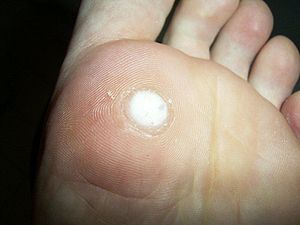 |
| Canoe-kayak-marathon (Photo credit: Wikipedia) |
Time marches on and things change. Now a person probably has five or six pair available to them or perhaps more. Shoes are becoming highly specialized. It’s almost like there is a pair for every function and keeping shoes dry is a thing of the past because there are shoes designed specifically to get wet - water shoes. Even water shoes are becoming specialized to the point where they may have multiple pair. Water shoes are designed with specialized mesh linings for quick drying and channeling systems that allow water to flow out of the shoes. Under what circumstances would you choose water shoes? Well, to wear around the deck of a pool. This may be done for different reasons such as foot protection from injuries, traction to prevent slip and fall injuries or hygienic purposes. There are even shoes designed with specific water sports in mind, such as kayaking.
When kayaking, you should consider the weather and performance demands of the shoes. A water sandal is good if the weather is warm because they allow for drainage and quick dry, while providing some protection for the foot. They have a snug fit and not a lot of straps to get tangled. Water booties are a better choice if the water is cold. They help keep the feet warm, have zippered or hook and loop closures to adjust for a snug fit. Serious kayakers may choose water boots that offer protection from water and cold all the way up to your knees.
If you need a shoe to take you close to the pools edge, you may wish to try something like Crocs. It gives you a little something to prevent slip, falls and keep your feet off the pool deck so your feet are away from fungus. However, if you are in the pool for an aqua class and are going to be moving a lot, try a sneaker type shoe that offers a bit of support, stability and protection from impact. Then, hit the water’s edge. There isn’t anything more refreshing than a quick dip, when the mercury rises.
Water shoes offer protection at times when other shoes aren’t appropriate, but if an accident or injury occurs, contact Dr. Blaakman at (877) 941-3338. He provides caring and compassionate full service podiatric care to help keep you active.
References:
http://www.galttech.com/research/sports/best-water-shoes.php
http://www.livestrong.com/article/427103-good-water-shoes-for-kayaking/
















